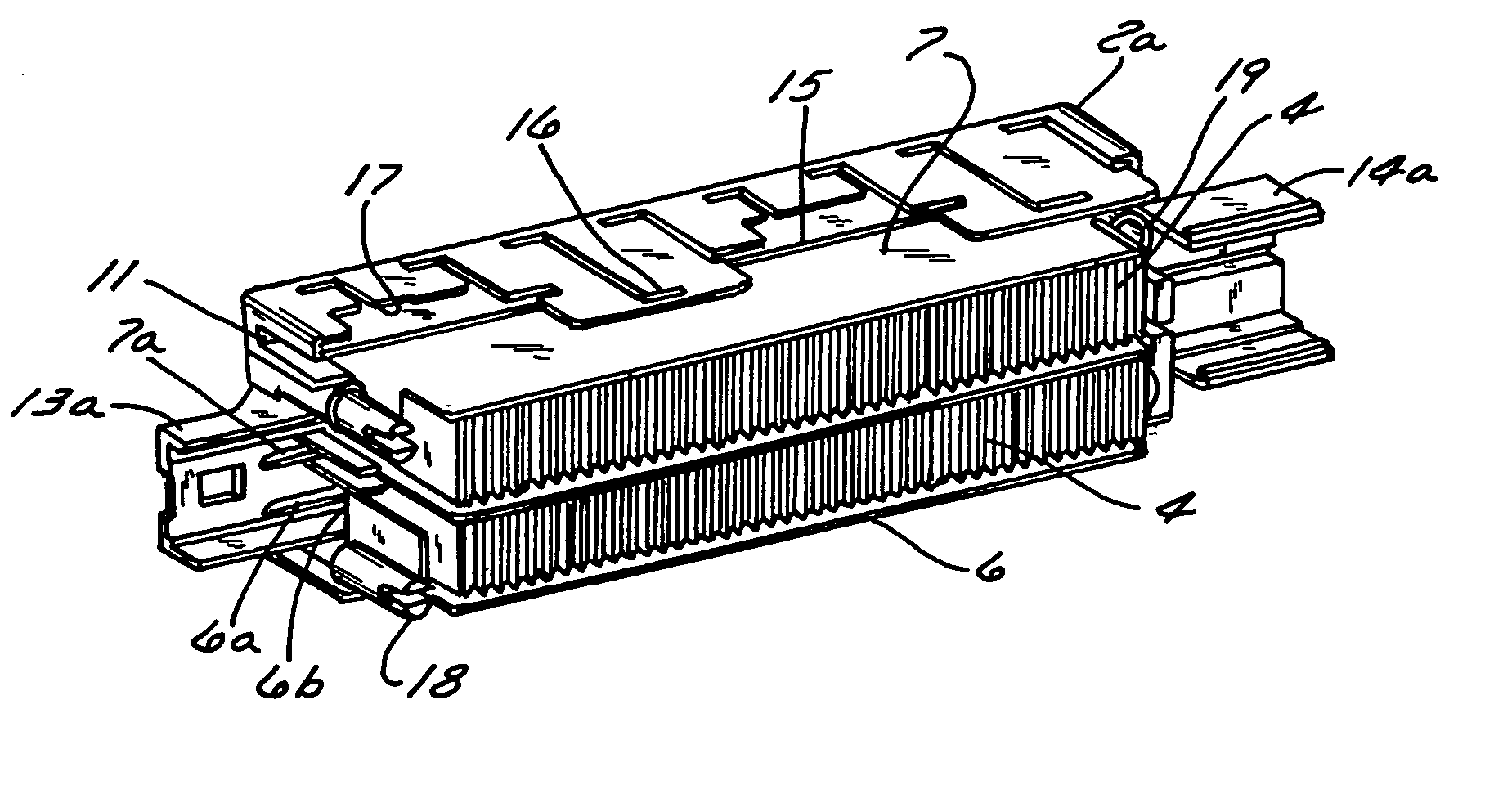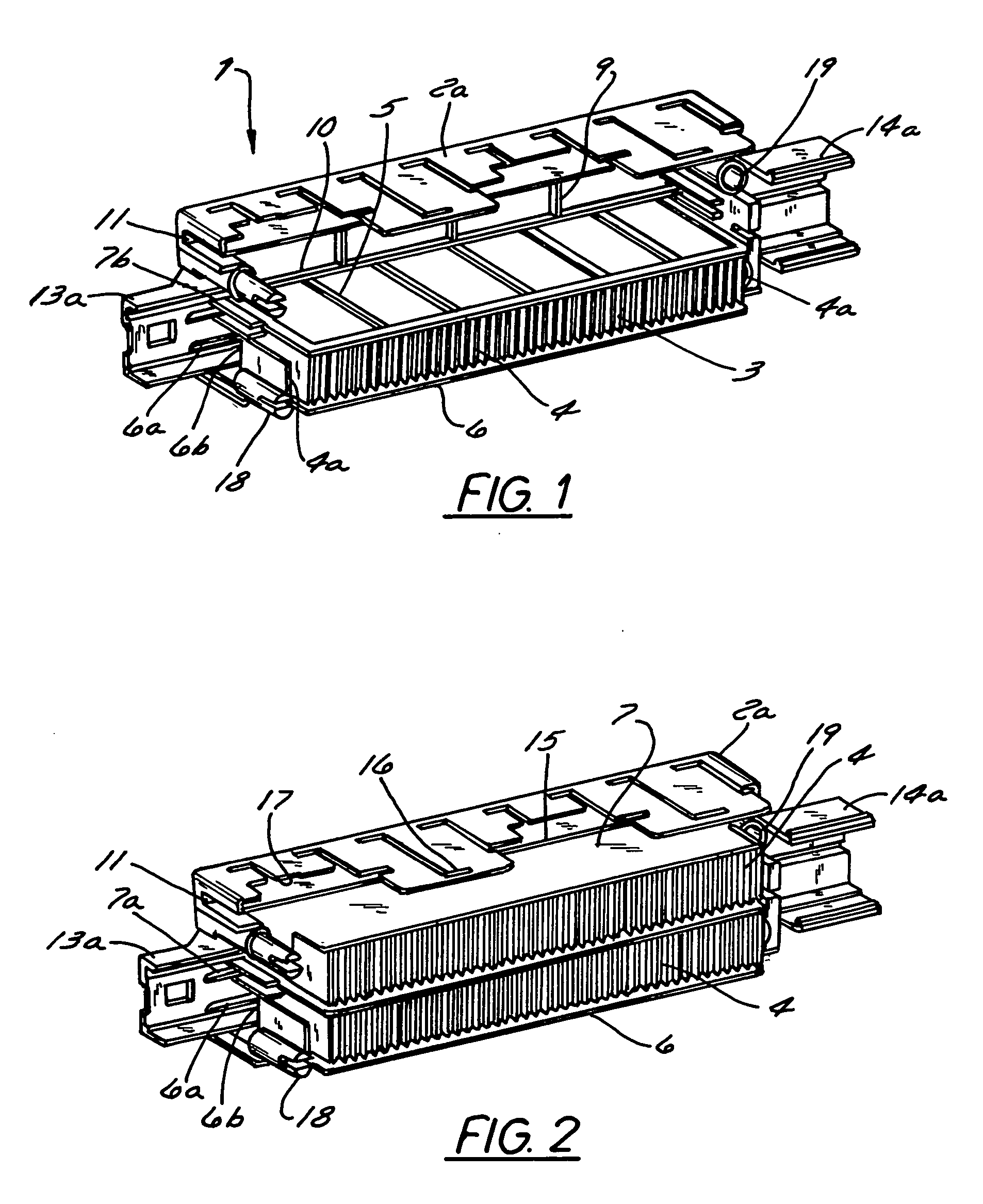Electric heater with housing
a technology of electric heaters and housings, which is applied in the field of electric heaters, can solve the problems of inconvenient use of electric heaters, troublesome measures to counteract the contact pressure force of resilients, and heaters with a conventional holding frame for modern air conditioners, especially for installation in automotive vehicles, are less and less suited, so as to prevent deflection or bending of the housing, impede the air throughput, and minimize the effect of obstruction
- Summary
- Abstract
- Description
- Claims
- Application Information
AI Technical Summary
Benefits of technology
Problems solved by technology
Method used
Image
Examples
Embodiment Construction
[0047] In contrast to conventional electric heaters for use in automotive vehicles, the heater according to the invention is composed of two half-shells of plastics. During production one housing half can first be equipped in an easy way and the housing is then completed by mounting the second housing half.
[0048] FIGS. 1 to 4 show successive assembling stages of the heater according to the invention, the stages illustrating the structure of the heater according to the invention. FIG. 1 is a perspective view showing one half-shell 2a of half-shells 2a, 2b of the housing. A contact sheet 6, a radiator element 4 and, next thereto, PTC heating elements 3 are inserted into the half-shell 2a. For an easy assembly guide rails and positioning means, respectively, are provided for all components. Especially the position of the contact plate 6 with the contact pin 6a is defined during insertion via guide 6b (and 7b, respectively, for contact plate 7 in FIG. 2). The radiator elements 4 are pr...
PUM
 Login to View More
Login to View More Abstract
Description
Claims
Application Information
 Login to View More
Login to View More - R&D
- Intellectual Property
- Life Sciences
- Materials
- Tech Scout
- Unparalleled Data Quality
- Higher Quality Content
- 60% Fewer Hallucinations
Browse by: Latest US Patents, China's latest patents, Technical Efficacy Thesaurus, Application Domain, Technology Topic, Popular Technical Reports.
© 2025 PatSnap. All rights reserved.Legal|Privacy policy|Modern Slavery Act Transparency Statement|Sitemap|About US| Contact US: help@patsnap.com



